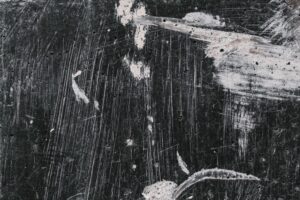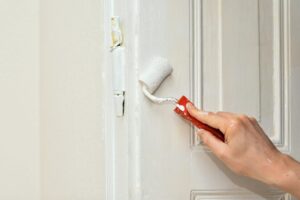A clear coat is a type of protective coating that is used to protect surfaces from scratches and other damage. It is often used on walls, furniture, and other surfaces that are prone to scratches. But does a clear coat really prevent scratches on the walls?
How does a clear coat protect against scratches?
The clear coat is made up of a combination of polymers and resins that form a protective layer on the surface. This layer helps to prevent scratches from occurring and also helps to reduce the appearance of existing scratches.
The clear coat is a type of paint that is applied to walls to provide a protective barrier against scratches, scuffs, and dirt. It is typically applied in a thin layer and dries to a hard, glossy finish.
It is designed to be flexible and resilient so it can resist everyday wear and tear. It also helps to prevent fading due to UV exposure. To maximise its protection, it is important to apply the clear coat properly and to maintain it with regular cleaning.
Its protective layer creates a durable finish that is resistant to damage. The clear coat is often applied to walls as a top coat to add a glossy sheen and to further protect the underlying paint layer.
The glossy finish also helps to hide any imperfections such as scratches or chips on the wall. A clear coat also helps to fill in any small gaps or cracks in the wall, providing an additional layer of protection against damage.
What type of clear coat should you use?
When it comes to choosing the right type of clear coat for your walls, there are several options available. You can choose from a water-based clear coat, oil-based clear coat, and solvent-based clear coat.
Some common types of clear coat finishes include:
Water-based polyurethane: This type of clear coat is a water-based product that dries quickly and is easy to clean up. It is often used for interior walls and provides a hard, durable finish that is resistant to scratches and stains.
Oil-based polyurethane: This type of clear coat is made from oil-based polyurethane and is typically used for wood surfaces. It is more difficult to clean up than water-based polyurethane, but it provides a harder, more durable finish that is resistant to scratches and stains.
Acrylic varnish: This type of clear coat is made from a water-based acrylic polymer and is often used for both interior and exterior walls. It provides a hard, durable finish that is resistant to scratches and stains, but it can yellow over time.
Lacquer: This type of clear coat is made from a mixture of resin, solvents, and sometimes pigments. It’s used on furniture and other wooden items. It dries quickly, providing a hard and glossy finish, but it requires multiple coats to be effective.
How do you apply a clear coat?
Applying a clear coat on the walls is relatively easy, but it requires careful attention to detail. First, you will need to clean the wall surface and make sure it is free of dust and debris. This can be done by using a mild detergent and water and wiping down the surface.
Once the surface is clean, you will need to apply a primer that is suitable for the material that you are working with. After the primer is dry, you will need to apply a thin coat of clear coat to the surface.
Once the clear coat is dry, you can apply a second coat to ensure a consistent and even finish. Allow the first coat to dry for about 15 minutes, and then apply a second coat. It’s important to use even strokes when applying the clear coat and to avoid applying too much in one area. For the greatest outcomes, be sure to adhere to the directions on the product label.
Benefits of clear coat
A clear coat is a type of protective finish that can be applied to walls to provide a number of benefits. Some of these benefits include:
- Protection against damage: Clear coat can help protect walls from scratches, scuffs, and other types of damage.
- Increased durability: Clear coat can increase the durability of the walls, making them less prone to wear and tear over time.
- UV protection: Clear coat can also protect walls from UV radiation which can damage wall paint over time.
- Increased resistance to moisture and humidity: Clear coat can help to seal the surface of the wall, which can make it more resistant to moisture and humidity. This is particularly important in areas of high humidity, such as bathrooms and kitchens.
- Protection against mildew and mould growth: Clear coat can help to prevent the growth of mildew and mould, which can be especially beneficial in areas that are prone to mould growth, such as basements.
- Enhanced stain resistance: Clear coat can make it more difficult for stains to penetrate the surface of the wall, which can make it easier to keep the walls looking clean and new.
- Increased fire resistance: Clear coat applied on some special paint can provide added fire resistance for walls.
- Long-lasting: Clear coat can be a long-lasting solution for protecting walls, and can often outlast traditional paint applications.
Is a clear coat effective against scratches?
When it comes to preventing scratches on the walls, a clear coat is quite effective. It acts as a barrier between the wall and any objects that may cause scratches. A clear coat also helps to reduce the appearance of existing scratches, making them less noticeable
A clear coat is an effective way to protect the paint from scratches and other environmental damage. It is also relatively easy to apply and can be applied to various surfaces and materials.
The clear coat is generally made of a polyurethane or acrylic resin that, when applied, creates a thin, nearly invisible layer of protection over the surface. This layer helps to protect the paint underneath from minor scratches and other damage.
Conclusion
In conclusion, a clear coat is an effective way to protect walls from scratches. It is easy to apply and can be done in a few simple steps. Additionally, a clear coat is not the same as varnish and should not be confused with it. With the right type of clear coat and proper application, you can keep your walls looking great for years to come.







